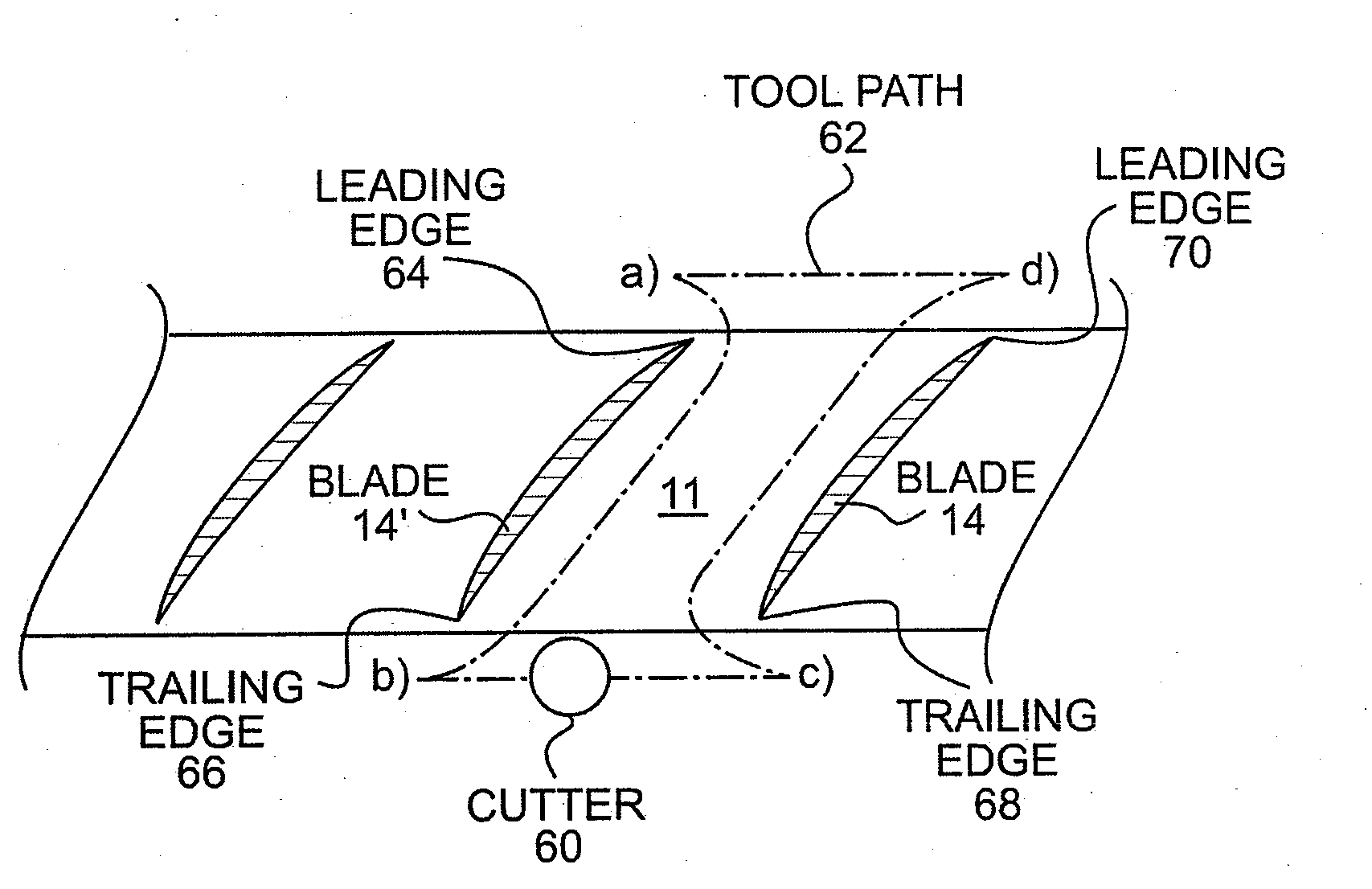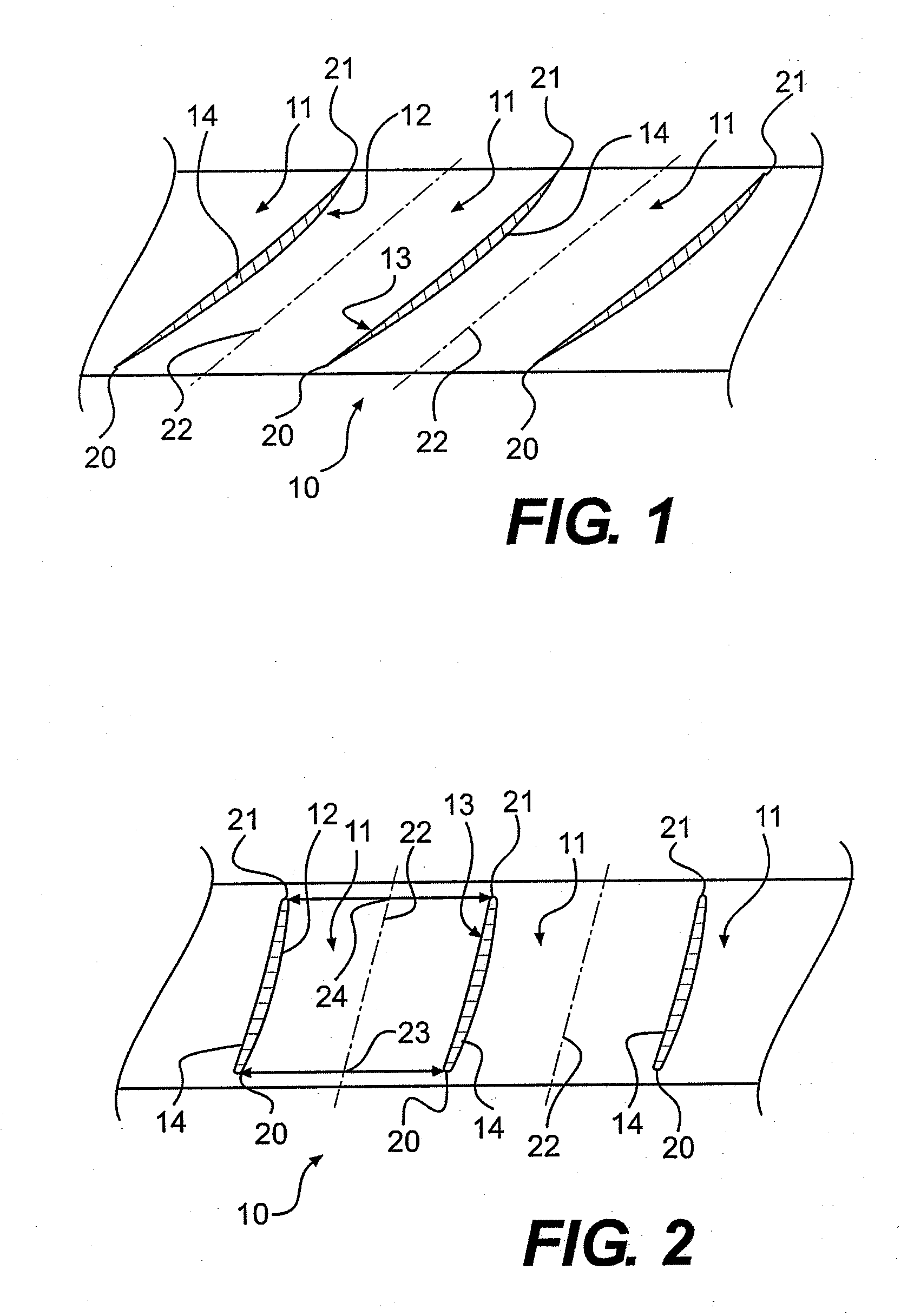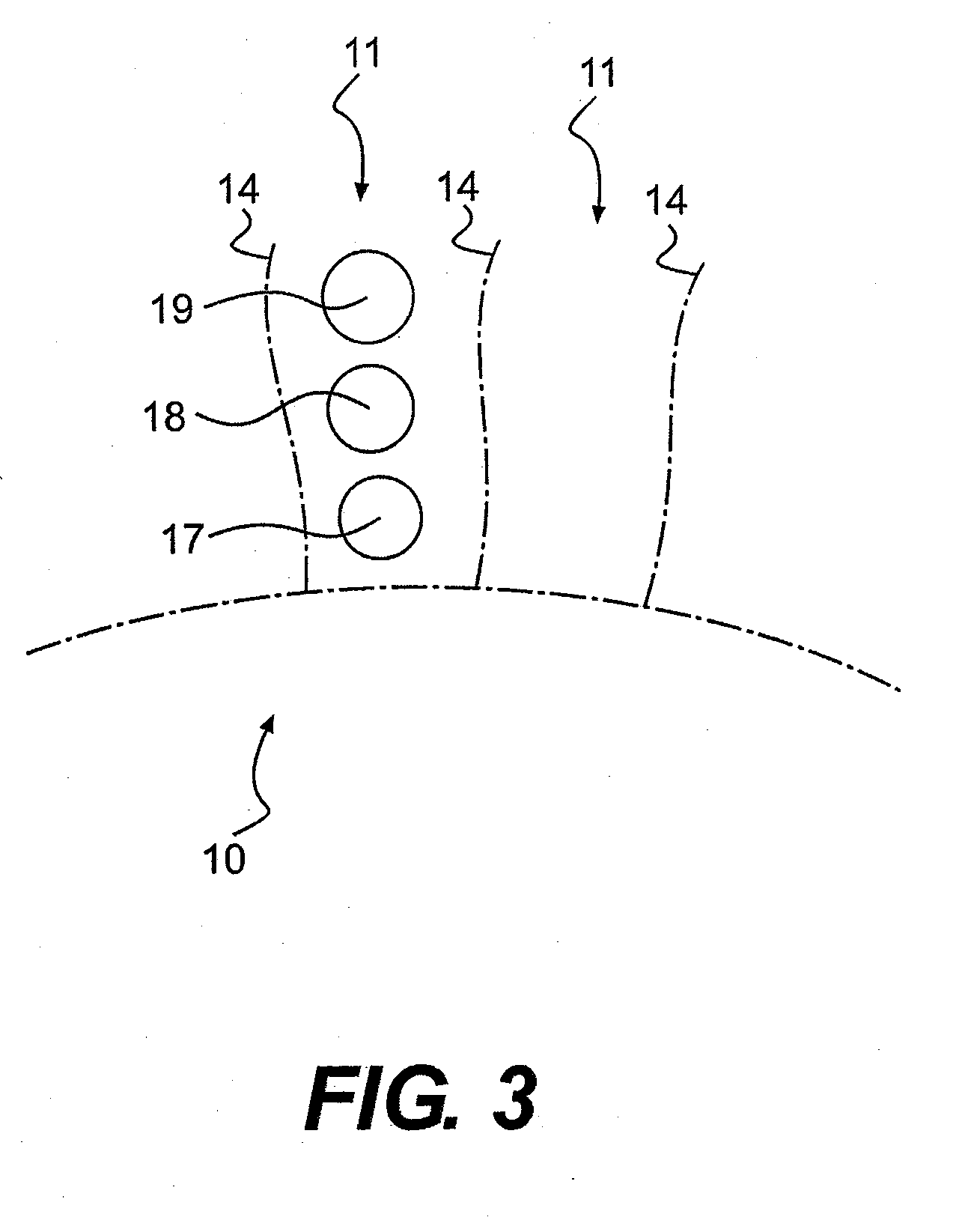Method of manufacturing and refinishing integrally bladed rotors
a manufacturing method and technology for integral bladed rotors, applied in the direction of engine fuction, maintenance and safety accessories, milling equipment, etc., can solve the problems of insufficient precision of integral bladed rotors, insufficient smoothness of blades, and insufficient precision of blades to be ready for use, so as to improve the finish, remove excess material, and accurately shape blades and flow channels
- Summary
- Abstract
- Description
- Claims
- Application Information
AI Technical Summary
Benefits of technology
Problems solved by technology
Method used
Image
Examples
Embodiment Construction
[0022]FIGS. 1 and 2 show a radial cross sectional view of an exemplary component of a gas turbine which is manufactured as an integrally bladed rotor 10. According to the present invention, a method is provided for manufacturing such an integrally bladed rotor 10, that is formed of materials that are difficult-to-cut and to machine, such as, for example, nickel alloys or titanium alloys. These materials are typically used in the manufacture of compressor and turbine blades of gas turbines, particularly for aircraft propulsion applications. However, other applications for the machining methods according to the invention may also be envisioned, in which components with complex shapes have to be manufactured from materials that are difficult to machine.
[0023]The exemplary integrally bladed rotor 10 is manufactured by initially forming recesses 11 between two opposite sidewalls 12, 13, in a workpiece block. The two opposite side-walls 12, 13 form opposing surfaces of two adjacent blades...
PUM
| Property | Measurement | Unit |
|---|---|---|
| damping | aaaaa | aaaaa |
| shapes | aaaaa | aaaaa |
| shape | aaaaa | aaaaa |
Abstract
Description
Claims
Application Information
 Login to View More
Login to View More - R&D
- Intellectual Property
- Life Sciences
- Materials
- Tech Scout
- Unparalleled Data Quality
- Higher Quality Content
- 60% Fewer Hallucinations
Browse by: Latest US Patents, China's latest patents, Technical Efficacy Thesaurus, Application Domain, Technology Topic, Popular Technical Reports.
© 2025 PatSnap. All rights reserved.Legal|Privacy policy|Modern Slavery Act Transparency Statement|Sitemap|About US| Contact US: help@patsnap.com



